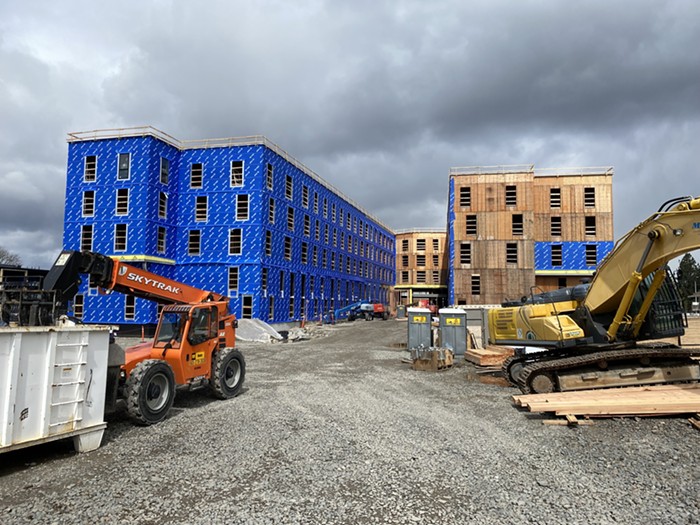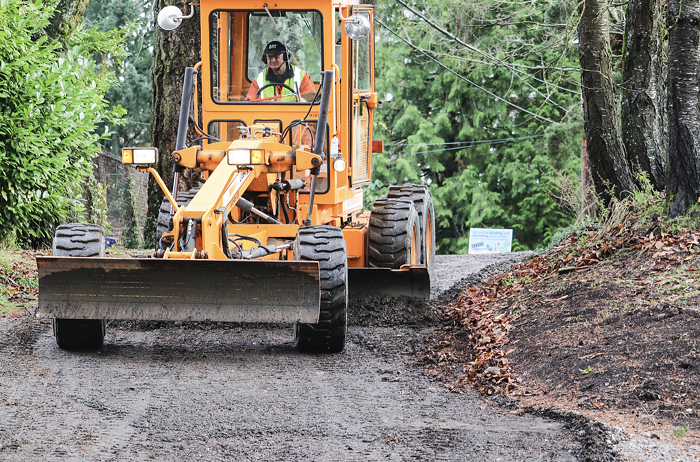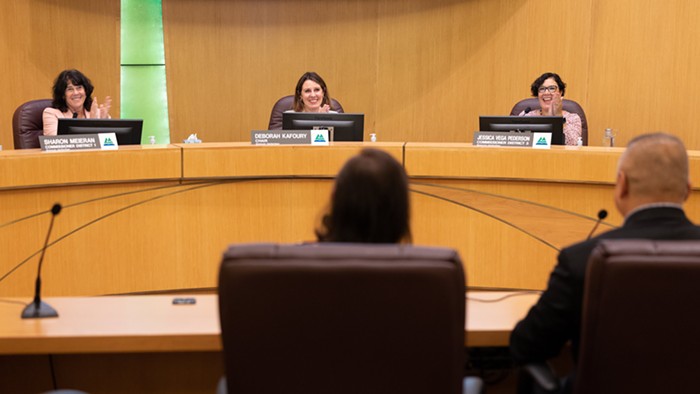Yes, I know. I've been writing incessantly about the Morrison Bridge for months now and you're all sick of it. Well suck it up! I'm back, and I've got more to say.
Recall: We replaced the deck on the bridge in 2012, but it started malfunctioning and degrading months later. In fact, there were reasons to be suspicious of the fiber-reinforced polymer (FRP) decking even before county had it installed, as I reported this week. A 2009 study suggested the deck might not work on a bridge like the Morrison, for one. And some of the panels that arrived from the supplier had cracks and "voids." They looked like this:
I am not a bridge engineer, but that looks sketchy. Actually, it looked sketchy to county bridge engineers, too. They groused about the shoddy state of the panelling, repeated over and over that they could reject the stuff outright, and cut the amount they paid for the material by $50,000. What they also did: Used the panels on the bridge, hoping nothing would go wrong. And now the deck is cracking and loosening, and we're going to have to shut the Morrison down and repair it.
(I should say that it's not entirely clear why the panels are coming undone. I can't explicitly say the terrifying cracks and voids in the material are causing the problems. And if they're not, does that make the situation worse? Wouldn't it be preferable to have the large, visible defects account for the failings, as opposed to some other, unseen facet of the project?)
Anyway, the county decided the panels were strong enough to ferry vehicles over the frigid Willamette and its toxic silts. And the reason I bring all this up is: I spoke yesterday, finally, with the man who helped them make that call. His name's Peter Dusicka, and he's an engineering professor at Portland State University.
Dusicka and his students contracted with project managers in the run-up to the Morrison rehabilitation project. Their job was to test two FRP systems selected by the county to see which would best suit the bridge. Basically, they beat the stuff to hell, taking measurements the whole time.
The county eventually picked a North Carolina company, ZellComp Inc., to supply the deck and, when it arrived looking like the pictures above, they had Dusicka run more tests.
"On the strength issue, they were satisfactory," he told me. "That aspect is not a problem."
But Dusicka said he feels for the engineers involved in this woebegone effort. It's not easy, he said, working with a bridge as old (built in 1958) and difficult (because it lifts) as the Morrison. And county staff had limited choices in what they could do to replace the old deck—steel grating that got slippery in the rain and sent the occasional SUV into the river.
"I kind of sympathize with the engineering decisions that have to go into doing this," he said. "The FRP deck is fairly new to us as civil engineers, but it definitely offers numerous potential advantages."
Those include a light weight and decent traction. And near the east coast, where FRP decks are used most, they're relatively impervious to the winter road salts that can eat away at bridges. But, as Dusicka pointed out, the surface is also pretty new in bridge use, and there are only a handful of companies offering it. We've not been lucky with the stuff in Portland. This is the second county bridge it's been used on—with headache-inducing difficulties both times. And state bridge overseers tell me they've had problems with the stuff in the past as well.
I also ran the Morrison's troubles by Makarand Hastak, a Purdue University engineering professor who's studied FRP [pdf].
He was cautious about making any sweeping statements about the bridge without first-hand knowledge, but based on my descriptions told me:
"Given the information you have provided the short answer would be: yes, I would question the use of that specific panel with cracks and missing web material. However, it should be determined by the engineer if the structural strength has been compromised."
According to Dusicka, it hasn't. The professor hasn't worked on the Morrison project for years, at this point, and couldn't speculate on what might be going wrong. But he stands behind his findings that the bridge is strong enough to carry the weights thrown at it.
"Nobody's gonna fall through this thing," he said, but noted: "It’s kind of annoying. You go over it, it makes noise. There’s visible cracks. It’s probably not the best surface to be comfortable on."




















